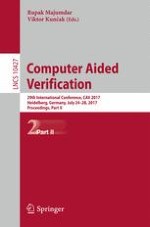2017 | OriginalPaper | Buchkapitel
E-QED: Electrical Bug Localization During Post-silicon Validation Enabled by Quick Error Detection and Formal Methods
verfasst von : Eshan Singh, Clark Barrett, Subhasish Mitra
Erschienen in: Computer Aided Verification
Aktivieren Sie unsere intelligente Suche, um passende Fachinhalte oder Patente zu finden.
Wählen Sie Textabschnitte aus um mit Künstlicher Intelligenz passenden Patente zu finden. powered by
Markieren Sie Textabschnitte, um KI-gestützt weitere passende Inhalte zu finden. powered by
